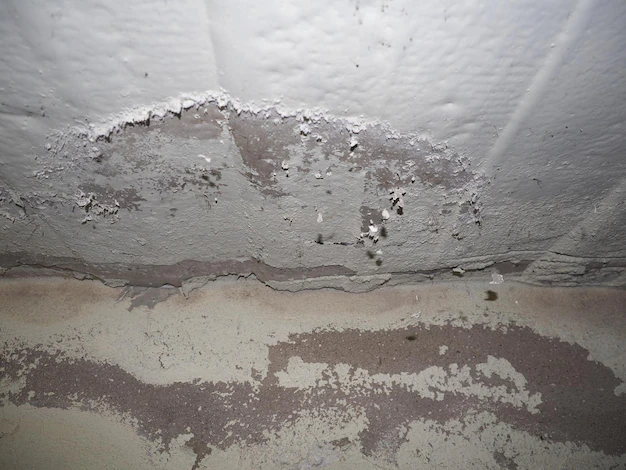A Battle Beneath Addressing Subfloor Mould Concerns

Table Of Contents
Subfloor mould is an unseen risk that threatens structural integrity and personal health. Mould under floorboards could quickly escalate into a problem that compromises air quality and causes potential harm to inhabitants.
ICE Cleaning is a professional cleaning company that offers comprehensive mould remediation services. Its operations work closely with local councils to provide safe homes for those living in social houses, eliminating mould with modern technology and solutions.
Read on to learn more about the common causes of subfloor mould growth and practical strategies to keep it at bay.
Introduction to Subfloor Mould
Mould is a common household issue lurking in hidden areas of your home, such as beneath the subfloor. This type of mould growth is particularly concerning due to its potential impact on indoor air quality and overall health.
The subfloor space typically refers to the area between your ground floor and the earth underneath. It is an area prone to dampness, poor ventilation, and lack of sunlight – conditions that are ideal for mould growth.
Subfloor mould can significantly affect indoor air quality by releasing spores into your living environment. These airborne particles can cause allergic reactions or respiratory issues among inhabitants.
Beyond health concerns, unchecked mould also poses structural threats over time. As this fungus feeds on organic materials like wood, prolonged exposure could lead to decay in wooden flooring structures or beams – leading to costly repairs or replacements.
Detection might not always be straightforward given its concealed location, but there are signs you should look out for:
- Musty odours permeating from floors
- Discoloration spots appearing on carpets
- Unexplained allergies among occupants
- Persistent damp feeling underfoot
Causes of Subfloor Mould

Subfloor mould is due to moisture, water damage, and poor ventilation. Moisture is a key factor in any mould growth, and it thrives when there is excess dampness beneath your floorboards.
Water damage takes this problem one step further, creating an environment for mould spores to start their colony. Without swift action, you could find your home completely infested.
Poor ventilation only exacerbates this, as a lack of air circulation traps humidity under the floor where sunlight does not reach, creating ideal conditions for subfloor mould growth.
The removal of subfloor mould starts by understanding its causes, which can help homeowners take proactive measures before things get out of hand. If you suspect you are dealing with subfloor mould, you should be actively preventing future outbreaks and fixing current ones.
Preventing Subfloor Mould
Controlling moisture is key to keeping subfloor mould at bay. You can employ dehumidifiers, heating, ventilation, air conditioning (HVAC) systems, and fans to assist in balancing humidity levels within your home at an acceptable level.
Regularly checking for water leaks and fixing them promptly also prevents excess moisture from encouraging mould growth.
Proper ventilation is equally crucial, more specifically promoting airflow under the floor. A potential solution includes installing sub-floor vents, which allow drier outdoor air to replace the damp, stale air trapped beneath the house.
Insulation also plays a vital role in preventing condensation, a common cause of mould growth. By insulating pipes and walls around crawl spaces or basements where subfloors are, you can significantly reduce condensation.
Cleaning regularly helps as it removes potential food sources for mould spores like dust particles or dead skin cells that might accumulate on your floors over time.
Easy Ways To Ventilate And Then Reduce The Damps
The root cause associated with ventilation and reducing the damps is the system. The open doors and the windows so that the air that gets in gets out. When you keep on airing the rooms, it will prevent itself from experiencing dampness. Hence, you could easily understand how easy it is to ventilate and, thereafter, reduce the dampness in your house. However we discuss some ways you can ventilate your home and reduce the opportunities of experiencing dampness.
Using Energy Efficient, Low Emission Heaters
The heaters are considered highly effective solutions to tackle the dampness associated with them. Ensure that you heat up your rooms with a temperature of at least 18 degrees Celsius.
Turn On The Bathrooms Fans
When you are using the bathrooms, you must turn on the fans of the bathrooms. Let the air dry up the water as much as it could. Let them operate till much of the moisture is dried up.
Rangehoods and Extractor Fans
Ensure that you extract the fans and rangehood and ensure that they are big enough to do their jobs. It is indeed one of the areas that you need to work out. Hence, you must try to understand your needs while clearing your room from moisture.
Take Care While Cooking
One of the tricks you must be mindful of in making your rooms damp-free is using the lid. It is an exceptional way to manage the cooking. Hence, you must take all your time to undrstand your requirements and, after that, ensure that the air is successfully let out from your rooms. This is a smart way, a smart approach to cooking.
How To Find Damp? Here Is A Checklist
Damp is the main reason for the subfloor molds. Therefore, you must take the initiative to identify them everywhere in your home. This is one of the precautionary measures you must take while maintaining the rooms.
First, you must look out for extractor fans and the clothes dryer. These fans and the filters need to be well maintained. They are the ones that drive the air outside.
Plumbing pipes and services have no leaks or moisture getting into the walls, floors, and near baths or showers. Therefore it’s proper to get under the house. Also, look that the downpipes and the gutters are clean and not leaking.
Conclusion
If you struggle with stubborn subfloor mould, you can rely on ICE Cleaning for expert cleaning services. Its strategies are designed to deal with such issues effectively so homeowners can protect their family’s health from persistent indoor fungal contamination.
To learn more about ICE Cleaning’s services, you can visit their website and get in touch today.
Read Also:

























